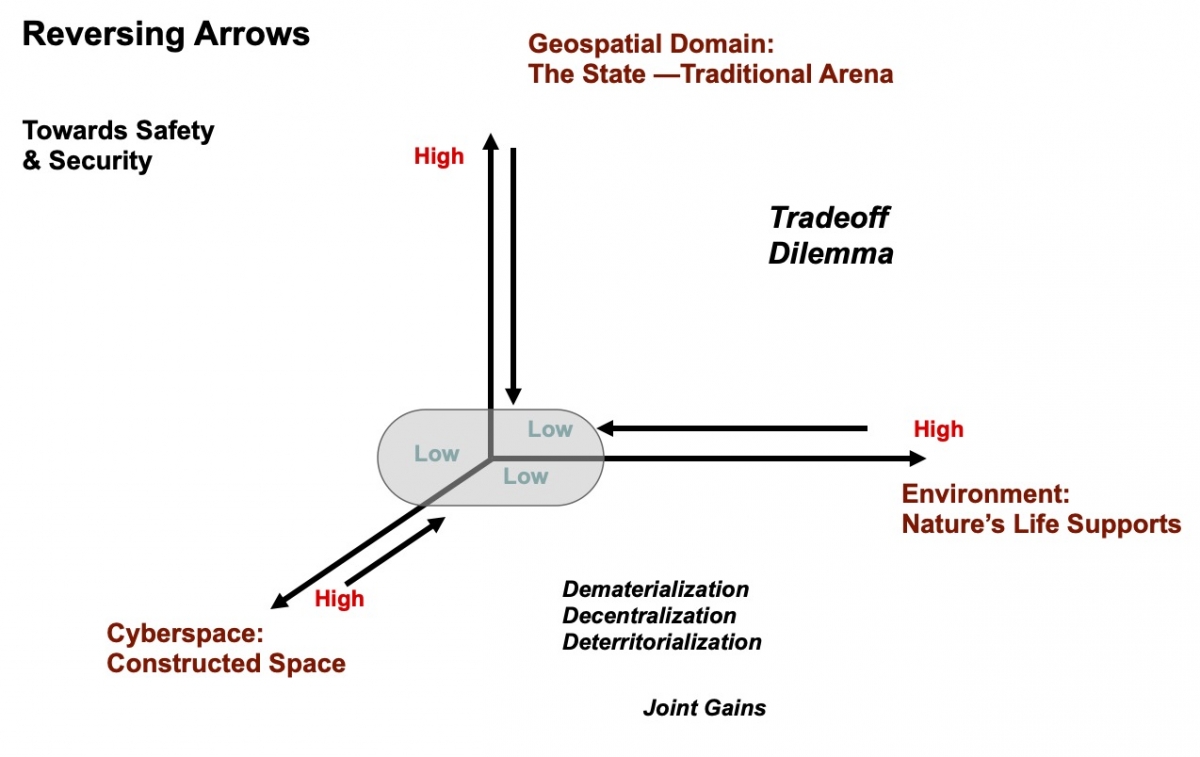It should come as no surprise that the next steps in lateral pressure theory and quantitative analysis must concentrate on connecting the dots, closing the loops, and addressing critical imperatives for the 21st century. Innovations in quantitative analysis may well follow this general trajectory as we began to appreciate the implications of the constructed domain, the endogenization of the environment, the salience of sustainability, and, increasingly, the inevitable imperatives of cybersecurity. It also should not come as a surprise that each phase of empirical analysis explores different modes of analysis as we become more and more aware of the complexity inherent in the theory and in the underlying realities that it seeks to represent. In Figure 3 we "reverse" the direction of the arrows—away from threats and toward higher safety and security.
 |
|---|
| Figure 3. "Reversing" the arrows. |
Clearly, Figure 3 is also static in form. The next challenge is to gain a better understanding of (a) the dynamics of lateral pressure within and across each of the three domains; (b) the ramifications for the international system as a whole, in terms of conflict and cooperation; (c) the internal civil and sovereign effects (if any) of lateral pressure and attendant consequences; (d) the impacts of, and for, state-firm interactions; and, to the extent possible, (e) the assessments of system sustainability at all four levels of analysis and across the three increasingly intertwined domains of interaction—the human system, cyberspace, and the natural environment.
Reference:
- Choucri, N., & Agarwal, G. (2017). The theory of lateral pressure: Highlights of quantification and empirical analysis
. In W. R. Thompson (Ed.), The Oxford Encyclopedia of Empirical International Relations Theory. Oxford University Press.
- Choucri, N., & Clark, D. D. (2019). International Relations in the Cyber Age: The Co-Evolution Dilemma
. MIT Press.